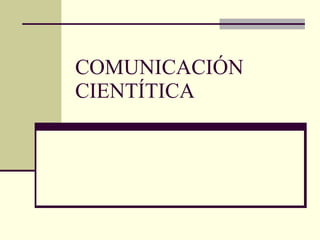Report
Share

Recommended
More Related Content
Similar to Comunicación cientítica
Similar to Comunicación cientítica (20)
A guide to effective geophysical writing and presentation

A guide to effective geophysical writing and presentation
Module Assessment 4 TANM ApplicationsBUS2 190Last name, Fir.docx

Module Assessment 4 TANM ApplicationsBUS2 190Last name, Fir.docx
Writing a Formal Lab Report and Scientific PapersG.docx

Writing a Formal Lab Report and Scientific PapersG.docx
Writing a Formal Lab Report and Scientific PapersG.docx

Writing a Formal Lab Report and Scientific PapersG.docx
More from cmclasalle
More from cmclasalle (12)
Comunicación cientítica
- 14. Pon aquí el título con letra grande y legible Tu nombre aquí 1,2 y tus compañeros o profesor aquí 1 , Departamento escolar 2 , Nombre del colegio o instituto INTRODUCCIÓN Y ANTECEDENTES RESUMEN METODOLOGÍA RESULTADOS METODOLOGÍA RESULTADOS CONCLUSIONES PROPUESTAS DE FUTURO AGRADECIMIENTOS: